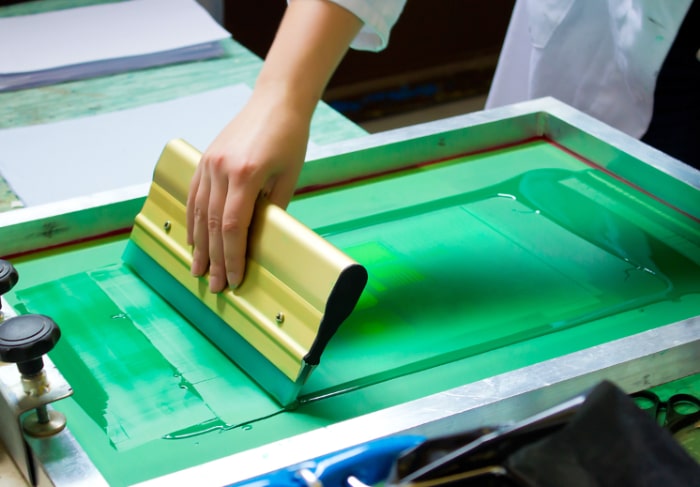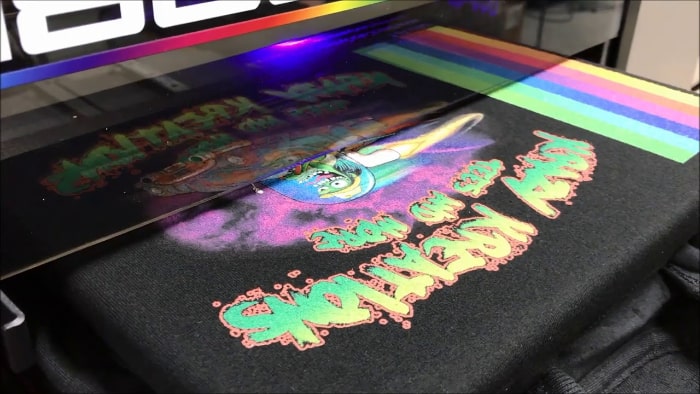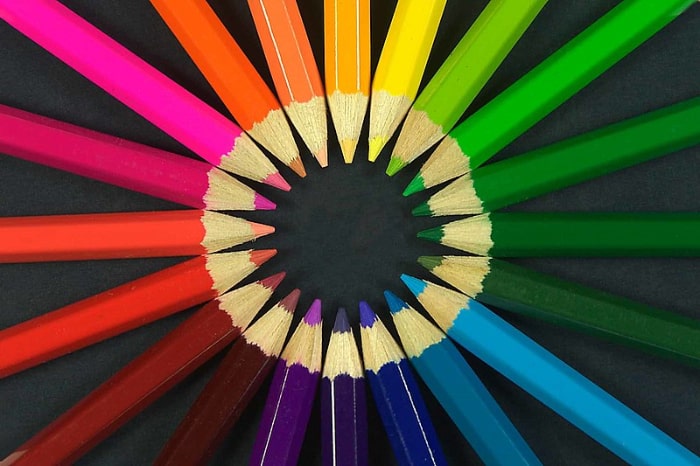DTG customized tshirt printing (Direct-To-Garment) has come a long way to becoming established as one of the printing methods employed in Singapore. It now rivals traditional silk screen printing in terms of quality and affordability.
Design and Print You Own T-shirt Here
No MOQ, Fast Delivery, Affordable Price
Contact Us for Customisation or bulk order
But the main question is: How do these two methods compare, and which is better?
You can definitely count on both of these techniques all day for customizing t-shirts, but there’s no such thing as the perfect solution, including them. Each comes with their own pros and cons, which will be covered in this article to help you make the sound decision!
What is Silk Screen Printing?
Silk Screen printing, which employs a stencil to drive ink into the fabric, is superior to Direct To Garment (DTG) shirt printing, which uses a large-scale inkjet printer to print on cotton-based fabrics (such as t-shirts). It’s quicker, cheaper, and better for the environment when used for short runs.
In what ways is silk screen printing better than DTG printing?
Consider choosing the former over the latter for:
- Larger, wholesale bulk orders.
- Single-color prints, such as logos.
- When exact color matching is required.
- Printing on polyester or other synthetic fabrics.
What is Direct-To-Garment Printing?
DTG shirt printing is more environmentally friendly than silkscreen shirt printing. Because DTG utilizes water-based inks when printing directly onto the clothing, no useless additional inks are required, and the only waste that does occur is from the periodic print head cleaning, which does not use any external materials but simply ink; this is the only waste. A milliliter-sized head cleans every day is often sufficient for printers that are regularly maintained. As long as ink waste is properly disposed of, DTG printing of t-shirts should have no environmental impact. Consequently, excess ink is flushed down the drain when the screens are cleaned, resulting in a lack of ink on the t-shirt.
Screen printing is a printing method that uses a stencil to apply pigments to a piece of cloth. For each color in a design, a separate screen is needed to create the stencil. DTG, which just requires software and computers to send a design directly to a printer, can create all colors at once. Printing begins with a white coating on dark-colored materials before moving on to the other colors. Setting up DTG takes far less time and is, therefore, better suitable for printing small quantities of t-shirts.
In what ways is DTG printing better than silk screen?
DTG is better for:
- Smaller orders (including single pieces).
- Standard print sizes.
- Printing on 100% cotton.
- Designs with many details.
- Designs with many colors and gradients.
- When lightweight print is important.
What’s the difference between these two printing methods?
For starters, silk screen printing is basically a technique where ink is pushed through a mesh and onto the garment or t-shirt. It’s rather straightforward that you could even try to attempt them at home, using these artworks as inspirations for your next screen piece! DTG, on the other hand, is the newer technique of spraying ink onto the garments. It’s much faster and easier, especially for designs with many colors.
To fully answer this debate, these two printing methods will be compared to each other in the following 6 categories:
- Vibrancy
- Consistency
- Details
- Durability
- Comfort
- Color
DTG Shirt Printing vs Silkscreen: Vibrancy
The vibrancy of a t-shirt is determined by its color saturation and brightness. While DTG printing has made some improvements in this respect over the years, it still has a duller appearance compared to silk screen printing.
Why? It all comes down to the ink used for each method.
Silk screen printing uses Plastisol ink, which is made of PVC particles suspended in a plasticizing emulsion. This type of ink is very thick and opaque, which can create this bright white underbase on dark garments.
On the other hand, DTG uses water-based inks which lack the opaqueness and vibrancy of Plastisol inks, especially on darker garments. As a result, the final results of DTG will never be as bright as those of silk screen’s.
DTG Shirt Printing vs Silkscreen: Consistency
Not many things are consistent. But when it comes to printing t-shirts, our objective should always be for them to look identical. DTG crushes it in the consistency department. Since DTG relies on machines using digital file copies to print directly onto shirts, there is almost no inconsistency to it.
On the other hand, silk screen printing can be consistent too, but there are just too many variables to consider: screen tension, mesh, ink viscosity, dot gain, squeegee sharpness, pressure, and the list goes on. These things add up to form inconsistency across!
DTG Shirt Printing vs Silkscreen: Details
When it comes to details, DTG handles it better than silk screen. DTG not only holds the tiniest of details (fine lines, textures, tiny elements) but does so consistently over the course of the print run.
Silkscreen printing, on the other hand, has some difficulty coming up with details. For that reason, we pay attention to silkscreen printed jobs that have details, or we adjust the artwork slightly to compensate for it, such as increasing the text size, etc.
DTG Shirt Printing vs Silkscreen: Durability
Durability is how long the quality of a print lasts. This is something that DTG struggles with. But silkscreen printing has shown otherwise, as long as it’s done right. If the ink is not applied correctly, even Plastisol ink can start to fade or deteriorate.
DTG Shirt Printing vs Silkscreen: Comfort
If you want a super-soft and lightweight print, then DTG is the way to go, especially on dark shirts! Since the ink is sprayed onto the fabric, there is a much lesser build-up of ink, more flexibility, and airflow through the fabric.
The comfort of a t-shirt should be measured by the flexibility of the fabric, the breathability of the print, weight of print on the shirt, and texture of the print. This factor alone holds great importance if you are an athlete with football jersey and deciding which printing method to choose from.
A request for softer prints would usually mean using water-based ink. This just means DTG wins in this department. We can also achieve quite a similar result with silkscreen printing with Plastisol ink by thinning it down with an additive to make it smoother and more lightweight on the shirt. Another way is by reducing the amount of surface area the ink occupies and hence breaking it up to make it more flexible.
DTG Shirt Printing vs Silkscreen: Color
When color is measured, we are usually referring to how well the printing method fare in color blending and color matching. Color blending is the ability to create smooth gradients and a range of colors by blending together a lesser amount of colors. DTG is superior in this department with its water-based ink that allows overlapping and combination to take place easier.
With screen printing, it’d be less accurate for color blending to be achieved, and setup will be less efficient, especially for smaller orders.
When it comes to color matching, we can duplicate any color with silkscreen printing using Pantones. This includes colors that are outside the range of CMYK. Matching colors accurately is very important especially when it comes to branding. If however, you try to color match using DTG, chances are they’re going to be off or completely out of range.
In Conclusion
The decision is up to you. Which t-shirt printing method to go with is based on the number of items, the design, and the type of material of garments to be printed on.
For orders of fewer than 50 t-shirts, direct-to-garment printing (DTG) is the better option since it is less expensive. Using DTG printing’s minimum setup, a single t-shirt may be produced for $5 to $10 in supplies (including the shirt).
Custom streetwear printed with DTG shirt printing technology outperform those printed with silk screen printing in every manner. When printing smaller quantities, DTG is the superior choice since it is more eco-friendly, quicker to complete, and costs less money. In contrast to screen printing, direct-to-garment printing (DTG) looks to be the future of tshirt printing in Singapore.
For those looking for the best printing services in Singapore, there are a few top printing stores in Queensway Shopping Centre. Otherwise, you can always contact Print on Demand Singapore for the best quotation! We provide the best services which include DTG printing, embroidery, and even vinyl!









Pingback: 4 Best Places to Get affordable Plain T-shirts in Singapore - Legendary Merch